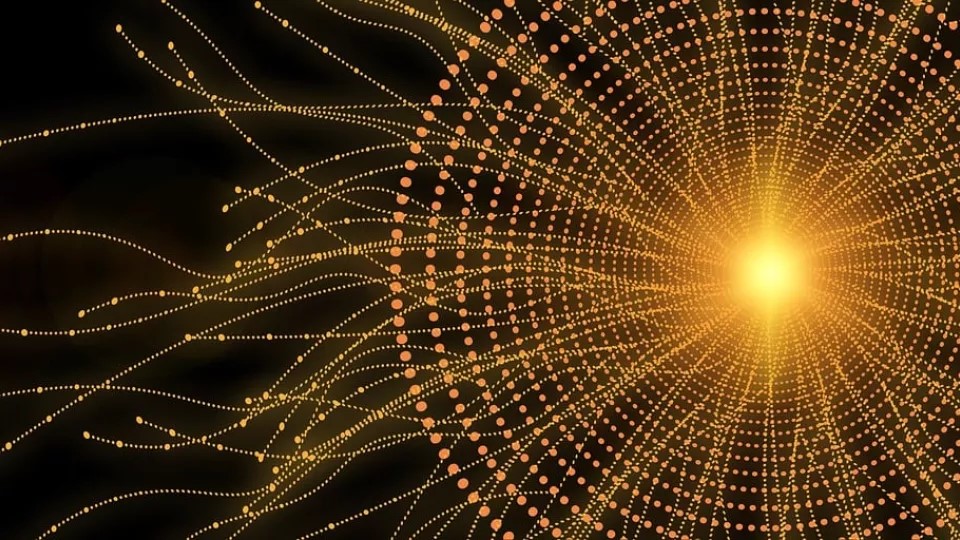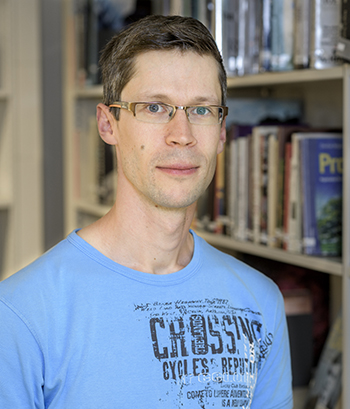Understanding the behaviour of light and matter - key to future technologies
If we can understand how and why light and matter behave as they do, we are one step closer to solving some of the most fundamental problems in physics. Finding the answers to these questions drives Ville Maisi, Associate Professor of Solid States Physics at NanoLund.
– Publicerad den 3 oktober 2023

As long as he can remember he has been interested electric circuits and physics. With the support of a new ERC Consolidator Grant, he has now started to bring these two fields together to develop ultra-sensitive detectors for high frequency electronics signals – building on the principles of quantum physics.
Measuring microwaves
His research project aims to design ultra-sensitive microwave detectors that can be used to measure tiny microwave light signals consisting of elementary particles, called photons. They will be 100 times more sensitive than detectors that currently exists. Microwave measurements are important in quantum technology, astronomy, communications, and other technology areas such as radars.
Ville Maisi explains that the challenge with this type of frontier research – and a conundrum he shares with fellow physicians all over the world – is to harness the microwave signals’ ability to behave both as waves and particles at the same time; precisely in the same way as ordinary light shows both wave and particle properties. He makes the analogy with quantum computers where ordinary computers work with bits of data that can be either 0 or 1, whereas quantum computers work with something called qubits that can be 0 and 1 at the same time. This dual function builds the basis for obtaining exponentially faster computation speed.
Holy grail
Controlling and harnessing the power from these simultaneous states – whether it be qubits or microwave signals – is the holy grail in physics today and represents one of the most important challenges facing researchers.
– To build our detector, we need to study elementary particle structures between light (photons) and matter (electrons). We need to understand how you perform the measurements. The increased sensitivity allows for detecting smaller signals, and the detection of individual photons opens for completely new kind of measurement designs.
One of the main challenges of Ville Maisi’s research is that particle states are very fragile which means that the detector acts back and hence alters the operation of the detector. The crux is to construct a detector that accounts for backaction effects and make the effects an integral part of the operation principle.
However, far from deterring Ville Maisi, these, so far unresolved, challenges are what motivates him in his daily work. The desire to progress physics as a research area has been one of his drivers since he became a researcher.
– If we manage to solve how and why particles and light behave the way they do, and under what conditions, we can lay the foundation to whatever new technology there might be. Just look at the transistor, today transistors are used everywhere, but 70 years ago they were only studied in the laboratory.
Unique strategy
Yet, the time frame from integrating Ville Maisi’s basic research into real-life applications will probably be considerably shorter than 70 years. This is because these kind of microwave detectors are already being considered for advanced technology areas, for example to probe tiny signals from space.
– We have a unique approach in the way that we employ semiconductor nanostructures in our microwave detectors. The research environment NanoLund has been defining the state of the art of semiconductor nanowire devices for about two decades so far, which is great for our project.
Ville Maisi has both big and small goals for the project. Foremost, he wants to demonstrate experimentally that it is possible to detect and count the microwave photon particles. This will be the work of the new PhDs and postdoctoral researchers who will be employed to work in the research project.
– A bigger goal is to design a completely new measurement scheme and get it into active use in a broad range of application areas where microwave measurements are important. Along the way, we will also develop new understanding of fundamental physics, says Ville Maisi.

Ville Maisi
Ville Maisi, Associate senior lecturer, Solid State Physics
Read more about Ville Maisi in Lund University Research Portal
ERC Consolidator Grant
- Call once a year
- Can be applied for by researchers 7-12 years after doctoral defence
- The grant is EUR 2 million over 5 years, which is enough for the principal investigator and team.
A strategic research area
NanoLund is Sweden’s largest research environment in nanoscience and nanotechnology, and a strategic research area (SFO) in Sweden.
Researchers at NanoLund specialise in nanotechnology. They produce extremely small particles that play a key role in the technology aimed at increasing the efficiency of solar cells. Thin nanowires, with a thickness of only one per cent of a human hair, are cultivated in a clean room laboratory and then included as a crucial component in the new solar cells.
The strategic research areas at Lund University are key activities for the realisation ofthe University’s vision to understand, explain and improve our world and the human condition
